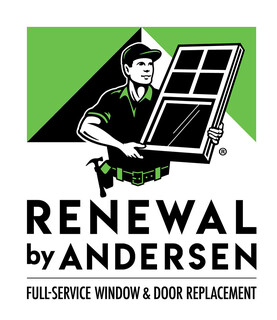What to Know Before You Replace Windows
Money’s Key Takeaways:
- While replacement windows may reduce your energy bills, their upfront costs may not fit into your budget — and recouping your investment will likely take years.
- New windows can add value to your home, so make sure you choose them carefully, taking into account your home’s style.
- Consider whether you might repair your existing windows or just replace certain parts.
- Look into local building codes and permits to make sure you’re following them.
Before you decide to replace the windows in your home, it’s important to consider several key factors. First, think about why you want to replace them. Are they drafty, damaged, inefficient, or simply outdated?
That may lead you to your second consideration: window styles. Understanding how to maximize your curb appeal while also increasing your energy efficiency and ventilation capacity is important, but be aware that your local permits and regulations might limit your options.
Finally, be realistic about your budget, looking into all your upfront costs.
To give you a ballpark idea, according to Angi’s (an online directory of home service providers), in 2024 homeowners in the U.S. can expect to pay between $575 and $1,475 per new window. The cost differences depend on the windows’ size, material, quantity, number of panes, brand, and labor cost. While some windows may result in long-term savings because they’re more energy efficient, it’s important to do the math to make sure this home improvement project is a wise investment.
Do you need to replace your current windows?
There’s no way out of it. Replacing your windows is not going to be easy or inexpensive. But, there are some signs to look for when you’re making the decision on whether it’s needed or not.
Common issues with older windows
There are a number of things that might make you want to replace your windows. Some of the most common are listed below.
Leaks
Maybe you’ve noticed that your windows are letting in water or you’ve noticed air drafts (both in and out). Windows are meant to protect your home from the outside, but damage can reduce their ability to keep you from the elements. Excess moisture can peel paint, cause warped frames, or bring rot and mold — all of which are expensive to deal with. Drafts can let hot air in during the summer and warm air out when it’s cold, resulting in higher energy bills.
Condensation
When the seals between panes on your insulated glazing units fail, the inert gas leaks, and moisture can make its way in, fogging your window. You can use defogging spray, ventilate your home regularly, check that there’s a moisture barrier in the crawlspace under your home, and use a dehumidifier to try and help. If the problem is severe, however, you might need to change the problematic upper or lower sash or the entire window.
Damage
A sticky window that’s hard to open may be due to something as simple to solve as cleaning the grime or dirt in a window track, but it may also be due to a warped frame. If the warping is severe, you might need to get new windows, though filler may help cover up minor cracks. Another issue is broken hardware, which might not be as much of a problem, unless you’re out of the warranty period or your windows are so old you can’t find replacement parts anymore.
What’s a window’s typical lifespan?
Windows will usually last an average of 15-50 years. The weather, material, installation and maintenance will all affect their condition.
Window warranties typically cover two parts: the glass panels themselves, and the hardware and frame. The guarantee on the panes of glass (or rather, on the window keeping energy-efficient gas between panes) will typically cover you for around 20 years. Guarantees on the non-glass parts of the window depend, ranging between 20 to 50 years.
Consider your window materials
The non-glass parts of windows are typically made of wood, vinyl or fiberglass, and sometimes aluminum, though this is a less common material.
- Wood. Wood is highly energy-efficient and can offer a classic look that’s easily customizable, but its durability can vary, and it may need more upkeep than synthetic materials. For context, old wood window frames were made from old-growth trees, making them much more resistant to the elements than newer wood. (This is mostly because the lumber is farmed quickly rather than naturally grown slowly.) If you have older wood frames, consider restoring or repairing them rather than replacing them wholesale. Another option is wood-clad frames, which have wooden interiors and vinyl or aluminum exteriors.
- Vinyl. Vinyl frames are typically less expensive than wood, though they’re an equally energy-efficient frame material. They’re durable and require less maintenance, but your design options are limited (though most window brands have a fairly large selection of colorways).
- Fiberglass. Fiberglass doesn’t need to be repainted, has very high energy efficiency, and won’t warp or crack with seasonal expansion or contraction. Colorway selection is generally larger than for vinyl, and these often have a limited lifetime warranty. However, they’re often the most expensive option.
- Glass package and glazing. The glass itself is a large part of the decision-making process of buying new windows (or determining whether to replace them at all). For maximally energy-efficient windows, take into account whether the glass has a low emissivity coating (Low-E), an energy star rating, double or triple panes, and argon gas or krypton gas between window panes. These will help keep heat in your home in cooler months and reflect solar heat away during warmer periods.
Budgeting for new windows
Replacing old windows or installing some in new construction is a pretty big building project, and may include more parts than just the windows themselves, such as awnings. This makes it doubly important to really get a handle on how much you’re willing to spend. As we mentioned above, several factors will influence the total cost of the project, though you should expect to pay $500 to over $1,500 on each window. Typically, storm windows are the least expensive, up to bow and bay windows as the costliest types of windows.
Today’s best dual-paned windows are about twice as effective at retaining heat and air conditioning as the single-paned units installed just a couple of decades ago, but perhaps only 15% more efficient if those old units have storm windows on them.
A window contractor will not only know the local regulations and window installation costs, but they can also help you take advantage of any available rebates on the local, state or federal level. Make sure to be honest and upfront about your needs, your budget, so that they can make recommendations of the best window for you.
Recouping your costsSince windows make up only a tiny fraction of your building’s exterior “envelope,” new windows will produce only about 5% to 15% percent total energy savings. The average homeowner in America pays about $1,000 a year to heat and cool a home, meaning it would take you more than 100 years to earn back your investment.
Homeowners get around 61% to 68% of their replacement window investment back when they resell the house, according to the National Association of Realtors' 2023 Cost Versus Value study. Choose the wrong windows, though, and replacements can detract from home value.
Make sure to match the look of the original windows — using wood rather than vinyl to replace existing wood and matching the divided light pattern (the number of panes in each window) from the originals.
Consider whether you actually need a full replacement
There are two ways to replace windows. The contractor can pull off the interior and exterior trim to install a whole new window unit — and insulate all the gaps — before reinstalling the trim, the same process used during a full renovation project. Or they can install a window insert, which is a smaller unit that fits inside the existing opening, without the need for removing the existing trim.
The latter saves $150 to $300 per window in labor costs, but it doesn’t allow for insulating the air gaps common around window openings, so inserts may yield far less in energy savings, and the overall size of the insert window may end up two to four inches smaller.
A window restoration specialist — or even a good handyman or carpenter — can free up painted-shut upper sash; replace broken panes, sash cords, hardware, and glazing (the putty that holds the glass in place); and add weather-stripping. That kind of overhaul typically runs $100 to $350 per window, and by the time you're finished, the old windows may wind up nearly as efficient as brand new ones. Besides, some old houses have beautiful windows that are well worth keeping.




